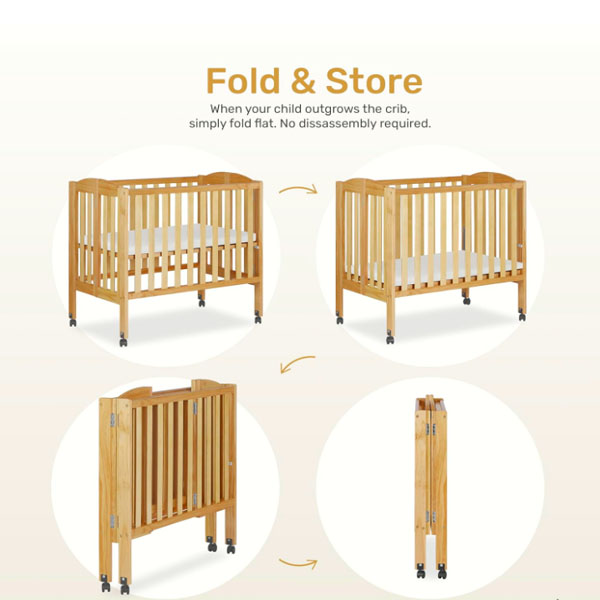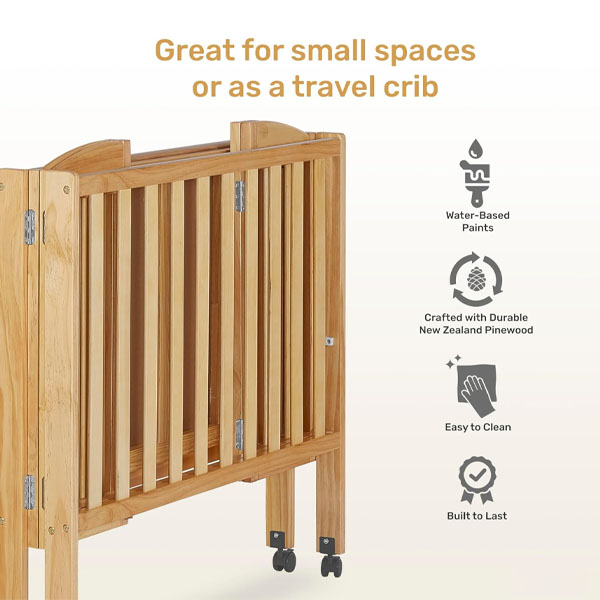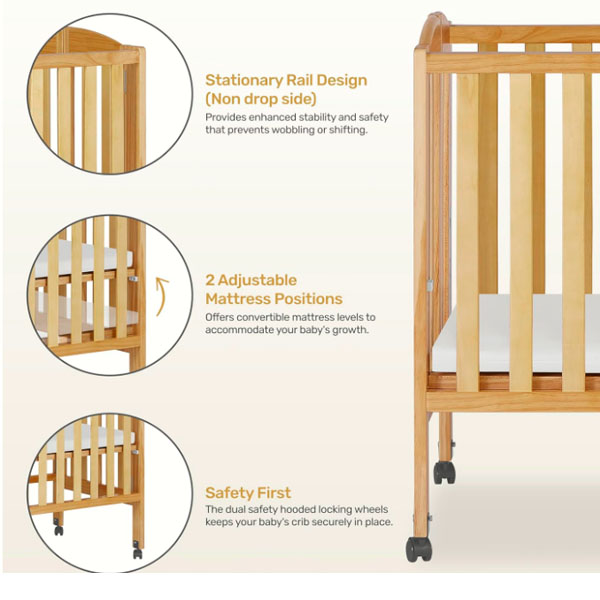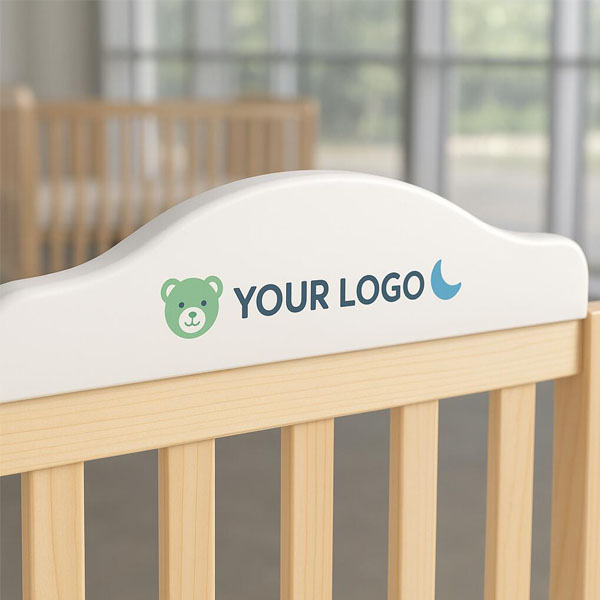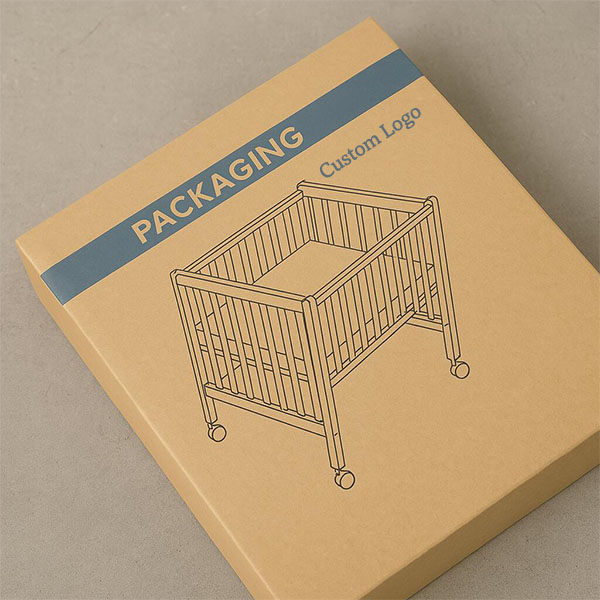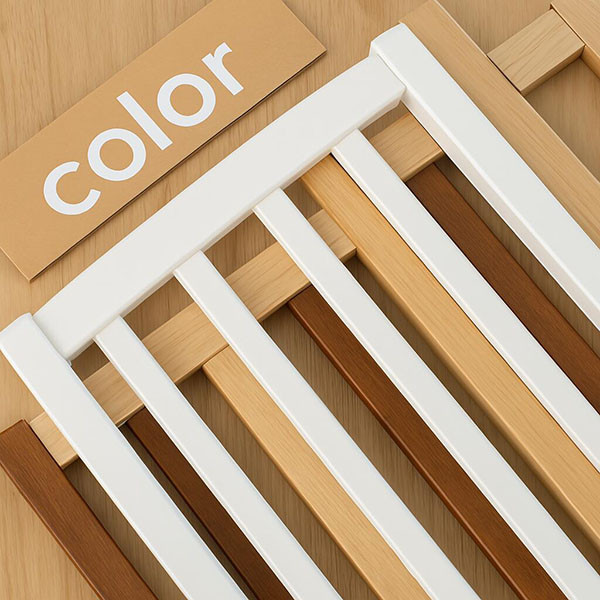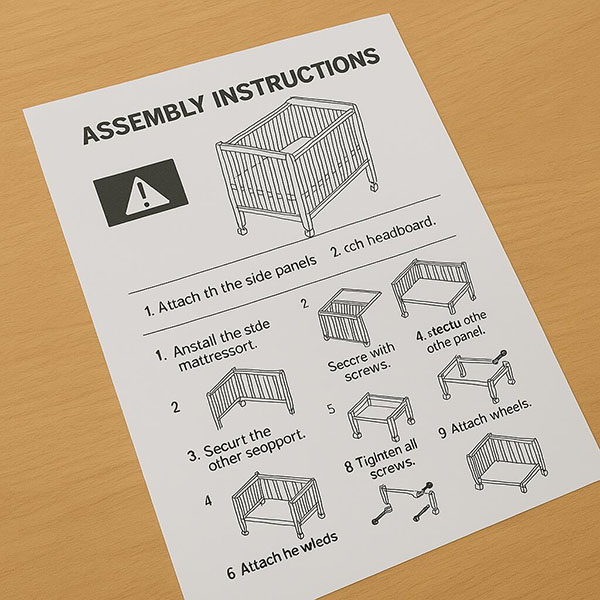What age can a baby use a Moses basket?
You’re dreaming of bringing your newborn home to a beautiful Moses basket. But as you look at its small size, you start to worry: how long will it actually be safe?
A baby can use a Moses basket from birth until they show signs of rolling over, typically around 3-4 months old. The age limit is determined by your baby’s development, not a calendar date.
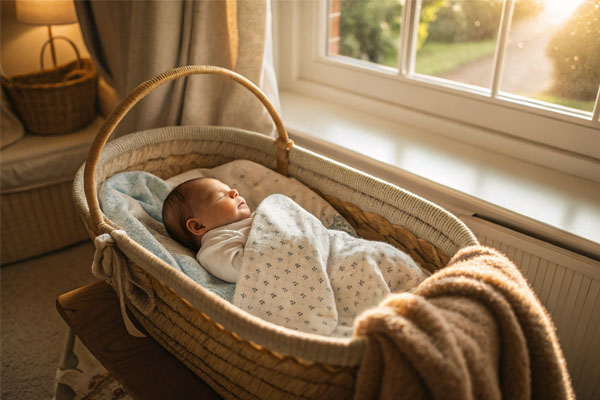
This question is about more than just numbers; it’s about the purpose of the Moses basket itself. I see it in the designs my clients request. The basket isn’t just a bed. It’s an experience. It represents a gentle, beautiful, and intimate start to life. It fulfills a parent’s desire to provide a cozy, protective nest. But to truly provide that safe space, we must balance that wonderful feeling with the practical facts of when it’s no longer the right choice for a growing baby.
Are Moses baskets good for newborns?
You want the very best for your newborn. The snug feel of a Moses basket seems perfect, but is it truly a good and safe choice for those first few weeks?
Yes, Moses baskets are excellent for newborns. They provide a small, cozy environment that can feel more secure than a large cot, and their portability makes it easy to keep the baby close.

The appeal of a Moses basket for newborns is a frequent topic with the brands I work with. It’s a product driven by emotion as much as function. A newborn has just spent nine months in a warm, enclosed space. A large, open crib can feel vast and empty to them. The smaller, womb-like dimensions of a Moses basket can help them feel more secure and settled. But the real magic is for the parents. Choosing a Moses basket is often an expression of a parenting style—one that values closeness, natural aesthetics, and a gentle welcome to the world. It’s a beautiful item that helps parents feel they are creating that special, nurturing environment. The practical benefit of portability is huge; you can have your baby sleeping safely beside you anywhere in the house, strengthening that bond and making supervision easy.
Are Moses baskets safe for SIDS?
The fear of SIDS is on every new parent’s mind. You want to know if a beautiful Moses basket is a safe sleep space or if it poses a hidden risk.
A Moses basket is a safe sleep space that can reduce SIDS risk, but only when it is used correctly. This means it must have a firm, flat mattress, no loose bedding, and the baby must always be placed on their back.

When my company manufactures any sleep product for babies, SIDS prevention is the number one priority. A Moses basket isn’t safe or unsafe on its own; its safety is all about its design and how you use it. We focus on two critical design features that parents must also maintain.
Key Safety Factors
- The Mattress: This is the most important component. It absolutely must be firm, flat, and thin. It must also fit the basket perfectly, with no gaps around the edges where a baby’s head could become trapped. A soft or ill-fitting mattress is a suffocation hazard.
- The Environment: The parent’s role here is crucial. The rule is simple: the basket must be completely bare. That means no pillows, no bumpers, no blankets, and no soft toys. The baby should only be dressed in a well-fitting swaddle or sleep sack.
Following the ABCs of Safe Sleep—placing the baby Alone, on their Back, in a safe Crib or basket—is what makes it a safe choice.
Do Moses baskets need a stand?
You’ve seen Moses baskets placed both on the floor and on stands. You are unsure if a stand is just an expensive accessory or a necessary safety item.
A stand is not required, as a Moses basket is safe on the floor. However, a stand offers significant convenience and keeps the baby away from drafts, pets, and accidental bumps.
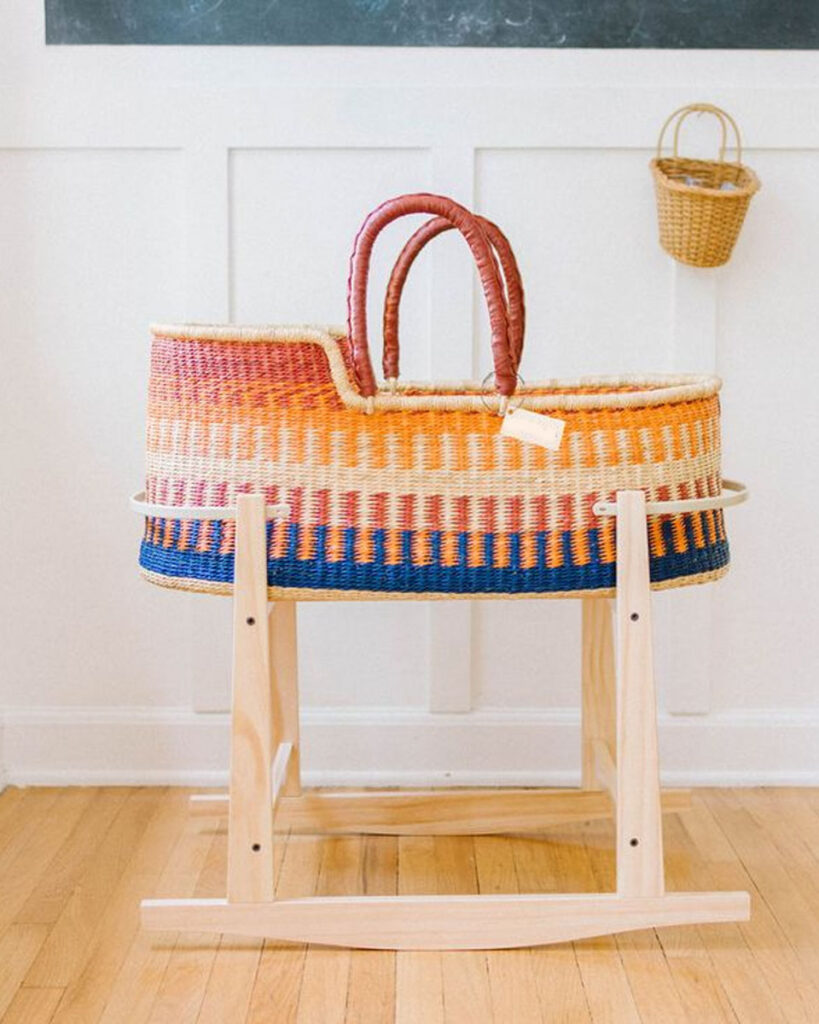
The decision to use a stand is about balancing convenience with your home environment. Placing the basket on the floor is perfectly safe, provided it’s in a spot with no foot traffic, pets, or other small children who could disturb it. But for most parents, a stand is a better option. For a mother recovering from childbirth, bending all the way to the floor to pick up a baby can be physically straining. A stand brings the baby to a comfortable height, making it easier to lift them and check on them, especially from your bed at night. From a functional perspective, a stand also lifts the baby above floor-level dust and drafts. If you do choose a stand, it’s critical to select the right one. This isn’t a place to guess.
Can any Moses basket fit any stand?
You found a beautiful basket from one brand and a stylish stand from another. It seems like a great idea to combine them, but you have a nagging worry about stability.
No, you should never assume one brand’s basket will safely fit another’s stand. For safety, you must use the stand made specifically for your basket or buy them as a certified set to prevent dangerous tipping.
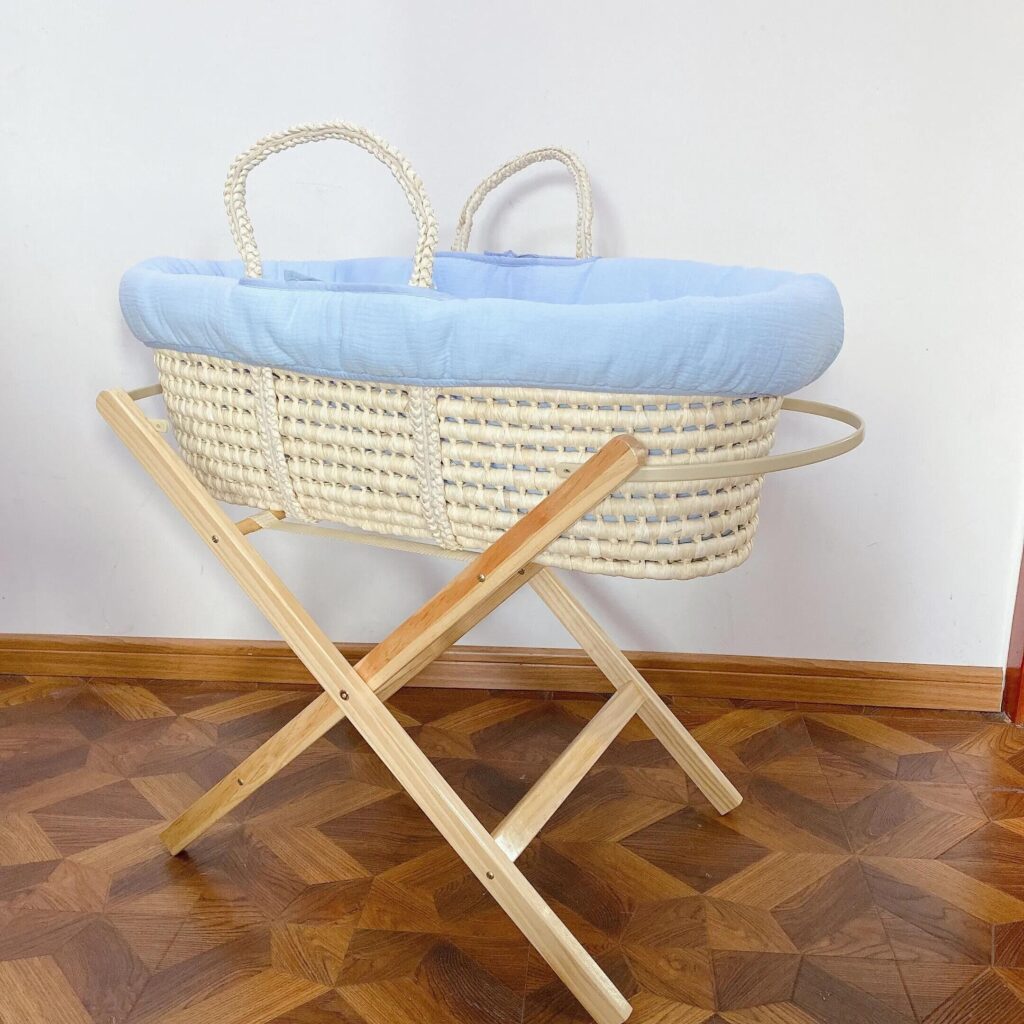
I have to be very direct here, as this is a major safety issue. As a manufacturer, we engineer and test a basket and its stand as a single, unified system. The stand’s base dimensions, its center of gravity, and its holding mechanism (whether straps or shaped bars) are all designed for the exact weight and shape of its matching basket. If you place a different basket on that stand, even if it seems to "fit," you create an unknown variable. The basket could be top-heavy or unstable. A small bump from a person or pet, or even the baby shifting their weight, could cause the entire thing to tip over. This is a terrifying and completely avoidable accident. Always buy the stand recommended by the basket manufacturer. Your baby’s safety is worth more than matching different brand aesthetics.
What is the alternative to a Moses basket?
You love the idea of a portable newborn bed but aren’t sold on the Moses basket. What other options provide that same closeness and convenience in the early months?
Great alternatives include bedside sleepers, modern bassinets with mesh sides for better visibility, or a portable playard (travel cot) that can be used for room-sharing.
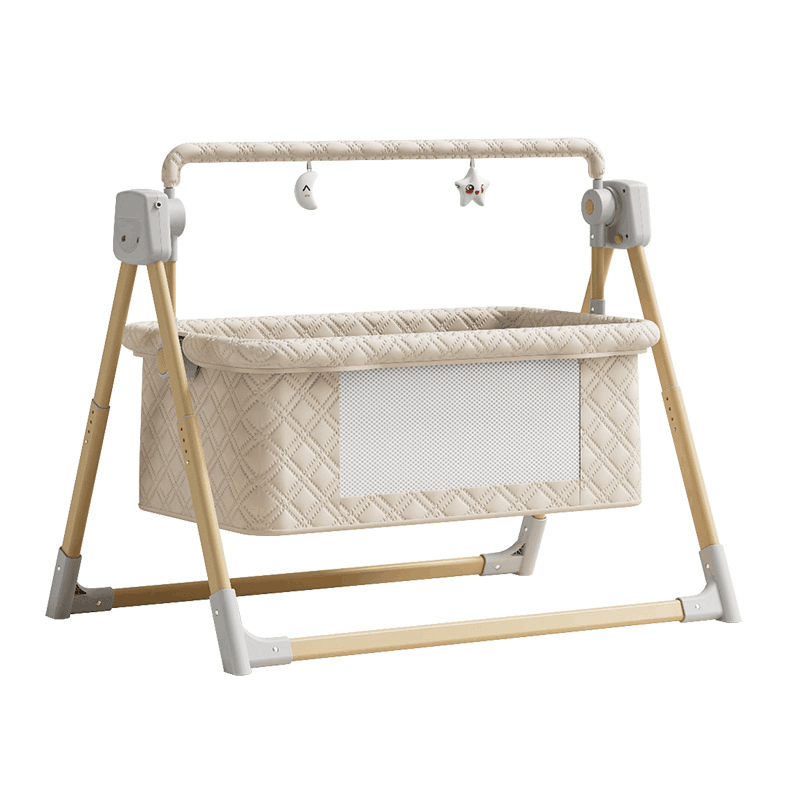
The Moses basket has a specific romantic appeal, but it’s far from the only choice for those first few months. The market now offers several excellent options that provide a safe, separate sleep space while keeping your baby close. Each serves a slightly different need.
Comparing Newborn Sleep Options
| Sleep Solution | Best For | Key Feature |
|---|---|---|
| Bedside Sleeper | Nighttime feeding and soothing. | A side that lowers for easy access from your bed. |
| Mesh Bassinet | Parents who value visibility and airflow. | Provides a 360-degree view of the baby. |
| Playard / Travel Cot | Families needing a multi-use, portable option. | Folds for travel and can be used for play later. |
| Full-Sized Cot/Crib | Parents focused on budget and long-term use. | A single purchase that lasts for years. |
A bedside sleeper is ideal for keeping the baby at arm’s length all night. A modern bassinet offers fantastic peace of mind with its breathable, see-through walls. A playard is the ultimate practical choice that can be packed up for a trip to the grandparents. The best alternative is simply the one that fits your family’s lifestyle.
When to transition from Moses basket to cot?
Your baby is growing so fast, and you dread the day they leave their cozy basket. But you’re anxious about waiting too long and putting their safety at risk.
You must transition your baby to a cot as soon as they show any sign of pushing up on their hands or rolling over. This is a critical safety step that typically happens around 3-4 months old.

Moving from the snug basket to the big, open cot can feel like a huge step for both you and your baby. But this transition is not optional; it is essential for safety. Do not wait for your baby to successfully roll over in the basket. You must move them when you see the very first signs they are developing the ability.
Key signs it’s time to move:
- Developmental Milestones: They are pushing up on their arms during tummy time or making rocking motions like they’re trying to roll.
- Physical Size: Their head and feet can touch both ends of the basket. They no longer have room to stretch.
- Manufacturer Limits: They are approaching the weight limit specified by the manufacturer (though development is a more important sign).
To make the change easier, try placing the Moses basket inside the cot for a few days so the baby gets used to the view. Then, start by having them take daytime naps in the cot before moving to full overnight sleep.
Do babies need pillows in a Moses basket?
You want your baby to be as comfortable and cozy as possible. A tiny, soft pillow seems like it would complete the nest, but something tells you to double-check.
No, a baby absolutely does not need a pillow. Pillows, blankets, bumpers, and any other soft bedding are a serious suffocation risk and should never be placed in a Moses basket.

This is the most important safety rule, and there are no exceptions. The global advice from pediatricians and safety experts is clear and united: a baby’s sleep space must be bare. The only thing in the basket should be a firm mattress and a tightly fitted sheet. I know you see beautifully styled photos online with cozy pillows and blankets, but those are for pictures only, not for safe sleep. Babies do not need pillows for neck support; their bodies are not built like ours. A pillow can actually force their chin toward their chest, which can obstruct their airway. More critically, if a baby turns their face into a soft pillow, they may not have the strength or coordination to turn away, leading to suffocation. The safest baby is one in an empty basket.
Conclusion
A Moses basket is a safe choice for a newborn from birth to about 3-4 months. It’s an emotional purchase for a gentle start, not a practical bed for the long term.




